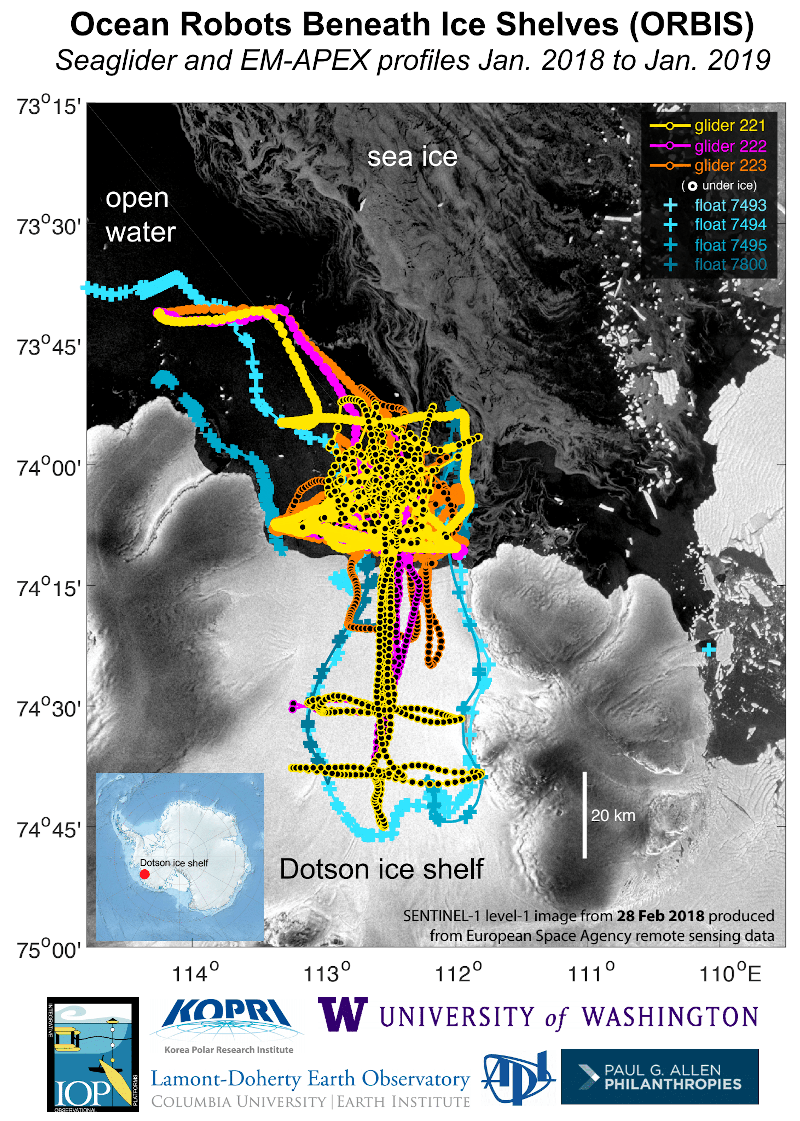Interactions between oceans and ice sheets are crucial to the regulation of the global overturning circulation and the current acceleration of ice flow into the ocean and associated sea-level rise. However, challenges imposed by harsh, remote polar environments and by the complex, hazardous environment near and beneath ice shelves severely limit availability of the measurements required to advance understanding of key processes. As a step toward addressing this problem, three Seagliders, specifically adapted for acoustic navigation and autonomous operations under ice shelves, four EM-APEX profiling floats and acoustic navigation beacons were deployed at the Dotson ice shelf in West Antarctica in January 2018 for a year-long mission that includes extensive observations both in front of the ice sheet and deep within the ice shelf cavity. Sampling until February 2019, gliders collectively collected over 4000 hydrographic profiles and occupied over 30 sections in front of the ice shelf in all seasons, resolving ocean variability on horizontal scales of a few kilometers.
Seagliders also occupied multiple axial and transverse sections within the cavity, the longest one covering 200 km in horizontal distance and lasting over 12 days. The acoustic navigation array allowed Seagliders to geolocate and navigate deep within the cavity interior. Profiling floats deployed at the inflow were carried into the cavity and ejected roughly two months later. This presentation will provide an overview of the mission’s accomplishments, discussing how both lateral intrusions and isopycnal heaving contribute to ocean variability, linked to ice-ocean interactions, oceanic melting, and water mass transformation.
